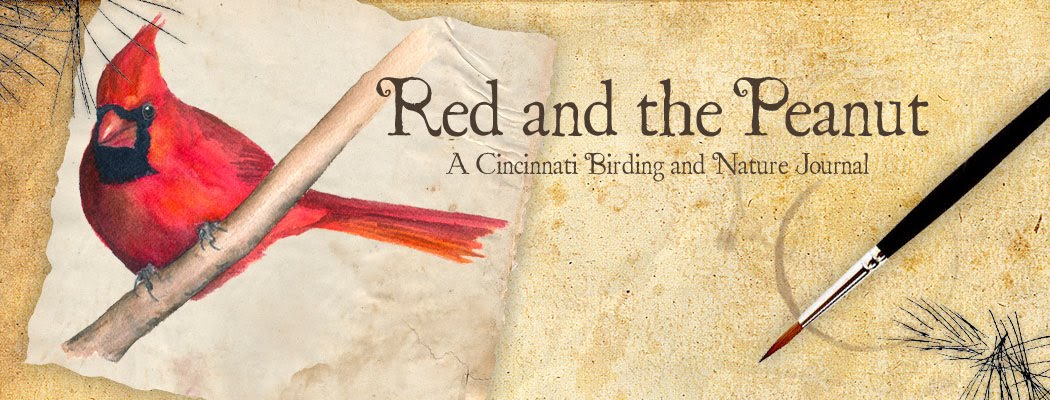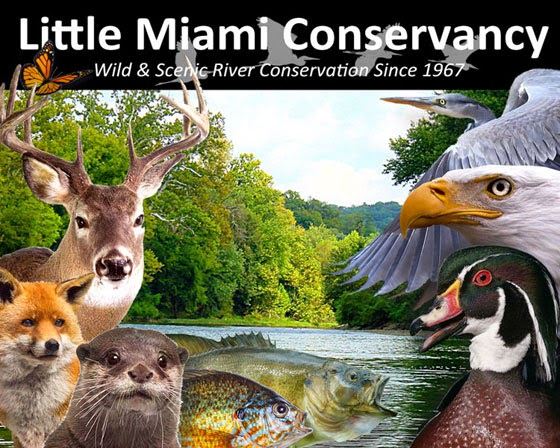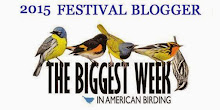Every spring Rick and I listen for the return of the Northern Parulas. In 2007 we were lucky because a male took up temporary residence in our backyard for two weeks singing loudly from dawn to dusk, but usually we find them singing in the tall Sycamore trees all along the Little Miami River.

Painting 150. Northern Parula in Spring
(Watercolor, Arches Cold Pressed 140 lb paper)

Pencil sketch of a Northern Parula
(study for painting 151)
We’re fortunate to have nesting Parulas in our area at all, because not much of Ohio is in their breeding range. In the deep south, Northern Parulas nest in trees dripping with Spanish moss, using the moss for nest construction, and in the north, they choose boreal woodlands with trees covered in
Usnea lichen (
which, with the nickname of Old Man’s Beard or beard lichen looks a lot like Spanish moss...), but Ohio seems to be a no-man’s land caught between the two…except for a few locations in southern and central Ohio, including our Little Miami River corridor! Since I see and hear Northern Parulas every spring and summer near the Powder Factory along the Little Miami River and a little further up the river at Fort Ancient, I didn’t know they were rare nesters in Ohio. They were common to me, but earlier this spring I started reading about them in “
Birds of Ohio,” by Jim McCormac, “
The Birds of Ohio,” by Bruce Peterjohn, and “
Peterson Field Guides, Warblers,” by Jon Dunn/Kimball Garret, and they all said the same thing--nesting Northern Parulas in Ohio "
prefer" boreal woodlands with white cedars and hemlocks:
“Breeders are largely confined to southern Ohio and are usually found in riparian woods with peak numbers occurring in hemlock gorges.” (McCormac, 251)
“As summer residents, Northern Parulas were formerly restricted to hemlock forests along the unglaciated Allegheny Plateau.” (Peterjohn, 422)
“In the northern portion of the breeding range it is generally associated with rather moist boreal forests including spruce, hemlock, balsam fir, white cedar, tamarack, an various hardwoods; Usnea lichen abounds in these habitats.” (Dunn/Garret, 197)
These descriptions definitely cover the areas in Hocking Hills where boreal relics live in the microclimates of the deep gorges, and therefore the largest concentrations of nesting Northern Parulas occur (
click here for a past post describing Hocking Hills region and parts of the Unglaciated Allegheny Plateau)…but in the Cincinnati area we don’t have a lot of white cedar and hemlock forests--unless you look at certain spots along the Little Miami River. In these areas relic boreal species still exist along its banks, hillsides, and gorges—all left behind from the mile-high Wisconsinan continental glacier 10,000 years ago (
click here for a previous post on how Clifton Gorge was formed and the white cedars and hemlocks that live there). These gorges, carved out by a glacial meltwater river, contain cooler microclimates that mimic the boreal north and allow the northern species to thrive. When you travel to the headwaters of the Little Miami near Clifton Gorge, you find stands of white cedars and hemlocks, but further down the river by me, huge Sycamore trees are king, so why are the Northern Parulas nesting here? The same books held the answer:
“Breeders are largely confined to southern Ohio and are usually found in riparian woods...” (McCormac, 251) ("Riparian" woods are woodlands along the banks of a stream or river, which would include the mature Sycamore trees along the Little Miami River.)
“Since the late 1950s, summering Parulas have expanded into mature sycamore-oak riparian woodlands in southwestern Ohio. The first Cincinnati area nest was discovered in 1958. In subsequent years, they spread throughout southwestern Ohio north to Preble, Montgomery, Clinton, and western Ross Counties. They have become uncommon to rare in most of these counties, with most reports of four or fewer daily, although as many as 11 males were counted along the Little Miami River in Warren County.” (Peterjohn, 423)
“…in the upper Ohio River Valley, they may occur locally in sycamore and oak woodlands.” (Dunn/Garret, 197)
…so…yeah! for the Little Miami River,
Usnea lichens and our little population of “common” Northern Parulas! The connection between
Usnea lichens and Northern Parulas is important. I even found it mentioned in my huge book on lichens, “
Lichens of North American,” by Irwin Brodo, Sylvia Sharnoff, and Steven Sharnoff, where they report the
Usnea species is important as nesting material for Northern Parulas. The Little Miami River is a healthy river free of pollution, so lichen populations are healthy and large. I guess our little Northern Parulas have found what they need in the mature trees along its corridor.

Painting 151. Field sketches of a Northern Parula
...painted near the Powder Factory along the Little Miami River, I put the paint down quickly using a limited palette and a water brush. I was going for an impression or "feel" of the bird, so I didn't bother with pencil sketches, detail, or accuracy.

These photos are from April 29, 2011 along the Little Miami river along the Fort Ancient hillside entrance. Rick and I were looking at Wild Ginger (Asarum canadense) growing along the path, and he was singing like crazy overhead. The photos are poor, but they show a few of the Northern Parula's characteristics. 
Northern Parulas are very small warblers and can crawl to the tips of branches to glean insects like a chickadee or kinglet. (Dunn/Garret, 196)

...a peak at that beautiful bright yellow chest.

...even in the dark shadows the white arches above and below the eyes are visible.

...and the two white wing bars are just as visible.
For a link to the U.S. Geological Survey map of the breeding range of the Northern Parula,
click here and
here.
For a link to a page on
Usnea lichens,
click here.




























